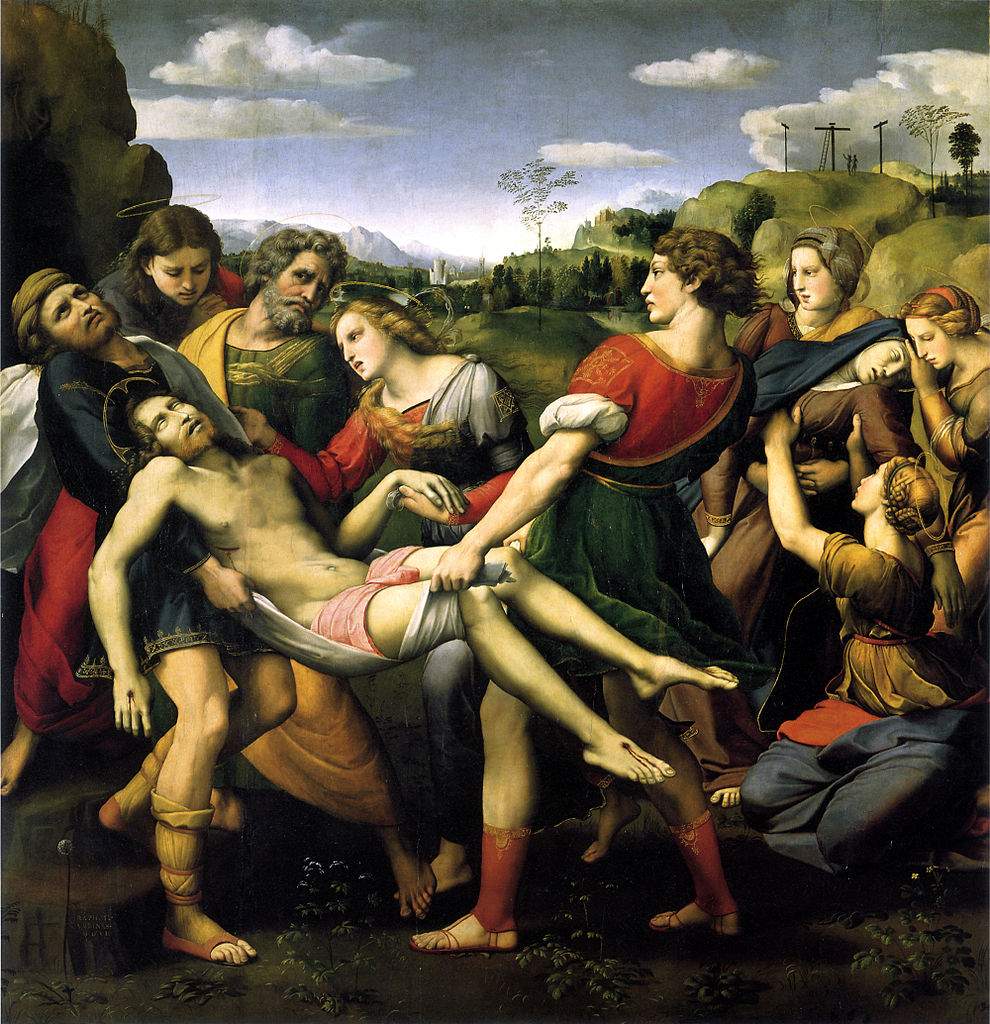Supercult. Philippe Daverio on Raphael
Here we are again with Cardinal Scipione Borghese. He had this painting hastily taken from the Franciscan convent near Perugia by counting it on to the friars, telling them that it was too important a work to be guarded so poorly and would therefore be far safer in his own home. A not inconsiderable diplomatic issue with the Perugians ensued, which was cheerfully resolved by His Holiness Paul V, declaring in an Apostolic Brief that the work was “cosa nostra” or “our thing” that is, the “private thing” of his beloved nephew. Raphael, who is often too sweet when he The Deposition Arch of Janus, 4th century A.D., marble, Rome 90 still influences Perugino, something he once loved and today makes him seem obsolete, is absolutely sweet and sour in this masterpiece.
It is a work of total break with the past, proudly signed RAPHAEL URBINAS MDVII, and was perhaps the cause of Raphael’s successful call to Rome in 1508 by Julius II. Bloody was the genesis of the painting, indeed of the polyptych of which it was the central work. It pours in full in the blood that bathed the peninsula during that passage of the millennium that had begun with the French wars of Charles VIII and ended in the catastrophes of the Unitarian ambitions of Valentino, the nephew of Pope Borgia. There was a great deal of tearing each other apart. The overall work has gone down in history as the Baglioni Altarpiece, not because of the hotel in Bologna or Florence, but because of the feudal Baglioni family that tried so hard to impose a lordship on republican Perugia during the turmoil of the 15th century. Grifonetto Baglioni, to secure control of the family inheritance, took out almost all of his relatives during a marriage, the stuff of twentieth-century Sicilians in the Umbria of that time. He was in turn pierced by the blade in the town’s main street. Thrilling operation that Oscar Wilde remembers well in The Portrait of Dorian Gray: “Grifonetto Baglioni with his quilted juxtaposition, his budded cap and curls in the shape of acanthus, who slew Astorre with his bride and Simonetto with his page, and who was of such beauty that when he lay dying in the yellow square of Perugia those who had hated him could not hold back their tears, and Atalanta, who had cursed him, blessed him.”
Atalanta was the mother of course, which was very Italian, and she decided to ask for the altarpiece to be made for the family chapel. Here is the cause of a pietas hitherto unknown to the worldly painter. All that remains of Perugino is the slender sapling silhouetted against the sky. The little female mouth that was his signature, and which had often influenced Raphael, becomes a parting of lips under a look of grief as she, perhaps Magdalene, but surely Zenobia the wife of Grifonetto, holds up the arm of Christ, who could not be more dead. Jesus’ mother has fainted. John is so caught up in the role that there is wind in his hair as he strikes the first true neoclassical pose in Renaissance painting.
---
Philippe Daverio, The Imagined Museum, Rizzoli, Milan, 2011, pp. 89-92
For more information on Raphael’s work.
 |
| Supercult. Philippe Daverio on Raphael |
Warning: the translation into English of the original Italian article was created using automatic tools. We undertake to review all articles, but we do not guarantee the total absence of inaccuracies in the translation due to the program. You can find the original by clicking on the ITA button. If you find any mistake,please contact us.



























